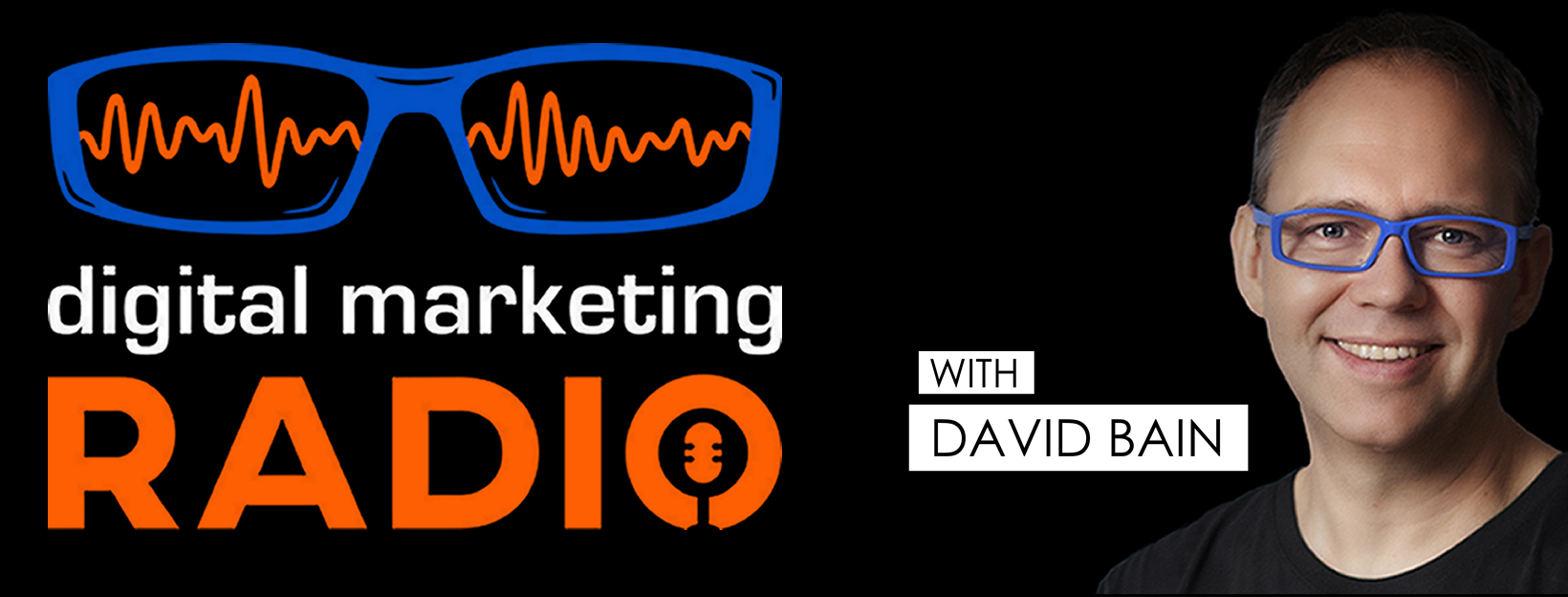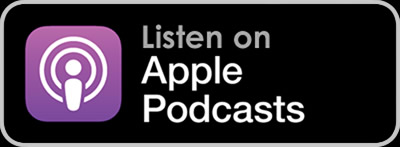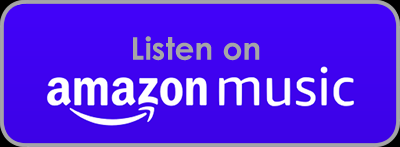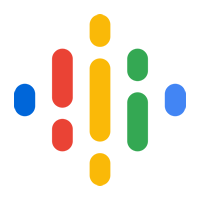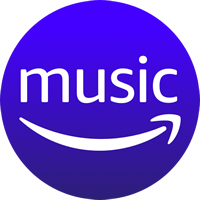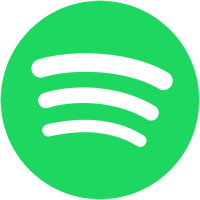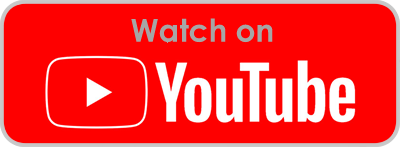I’ve dabbled in podcast advertising, but there are many brands out there who are spending significant sums on introducing their product or service to ever-increasing podcast audiences.
So what works best when it comes to advertising on podcasts is this something that your business should be considering?
Joining me to discuss that is a lady who’s sold over 50,000 podcast ads in the past year. She has an extensive background in radio advertising – and she’s a current, influential voice in the podcast advertising space – welcome to DMR, the Founder of True Native Media – Heather Osgood.
Key questions covered in this episode:
How different is podcast advertising to radio advertising?
What type of business tends to do best when it comes to podcast advertising?
And what kind of ad works best?
Are natively read ads more effective?
I’ve heard creative ads that are interesting and insightful – should a podcast advertiser ideally be collaborating with the host to produce the ad?
How do you measure the effectiveness of a podcast ad?
How much should a brand be willing to pay for a podcast ad?
Should advertisers have any concern over the nature of content that their ad appears on?
Many podcasters also produce YouTube shows and have email lists – should advertisers be looking at cross-platform opportunities?
Audio recording:
Full transcript:
David Bain
Digital Marketing Radio episode 268 Should your brand be advertising on podcasts?
Bot
Digital Marketing Radio with David Bain
David Bain
Hi, I’m David Bain. In this is Digital Marketing Radio, the place where today’s modern marketing masters mingle, keeping you up to date with all the latest tools, tactics and trends of all the essential, engrossing matters in digital marketing today. I’ve dabbled in podcast advertising in the past, but there are many brands out there who are spending significant sums on introducing their product or service to the ever increasing podcast audience. So what works best when it comes to advertising on podcasts? And is this something something that your business should be considering? Joining me to discuss that is a lady who’s sold over 50,000 podcast ads in the past year, she has an extensive background in radio advertising, and she’s a current influence influential voice in the podcast advertising space. welcome to DMR, the founder of True Native Media – Heather Osgood.
Heather Osgood
Thanks so much for having me on. I’m excited to dig into one of my favourite topics, podcast advertising,
David Bain
well, that was lucky, we chose the favourite one. You can find Heather over at truenativemedia.com. So Heather, how different is podcasts advertising to radio advertising?
Heather Osgood
I would say that it’s vastly different, it’s very easy to put them in an audio space. And when we think about it, of course, we have terrestrial radio, we have streaming audio, and then we have podcast advertising. And they’re all very different. Because the approach and the audiences are different. When we look at podcast advertising, what we really find is that people don’t mind the ads as much as they do and other forms of marketing. And I think that that’s what really makes them stand out. And what makes them different.
David Bain
Does that mean that they don’t mind any type of ad at all? Or is there a certain type of ad that that resonates with an audience compared with other types of ads?
Heather Osgood
Yeah, absolutely. So in the podcast space, we certainly do have different types of ads that are going to run. So if you are a podcast listener, you have most likely heard what we would call a host read endorsement ad. And that host right endorsement ad is an ad that has been put together by the host of that show, they have sampled tried that product. And then they have given their personal experience with that product. So in many ways, it does feel like native advertising, it feels very organic and authentic. And that’s what stands apart from other forms of advertising. When we think about podcast ads. Now, of course, there are programmatic pre produced type of ads that also get inserted into podcasts. And I would say that, you know, over the years, we certainly have seen an increase in that. And it’s at a tight now, and I’m sure that we will see more of that to come in the future. But when we talk at true native media, and in particular about the power of podcast advertising, we’re really referring to that influencer based host read endorsement style ad.
David Bain
Okay, I’m sure you’ve tested programmatic, automatic insertion, pre produced ads, in terms of the effectiveness, the brand lift, uplift the conversion rates that you measure, I guess, because of the ad being inserted versus the host read ads. Is there a noticeable difference in terms of effectiveness between each type of ad?
Heather Osgood
Yeah, so there’s actually a few different types of ads, ad insertions within podcasting. So ads started as being embedded or baked in. So if you were doing a host read endorsement ad, traditionally, I would say, you know, in the last 10 years, they were all done in this embedded fashion. And what that means is that if you were listening to Episode 100 of a podcast, and there was an ad in there, for let’s say, Hello Fresh, that ad would live in Episode 100. So anyone listening to Episode 100, would hear the Hello Fresh ad, if you listened to Episode 99, or episode one on one, you would not hear it. And the value of those embedded ads is that you paid for the number of downloads that would happen within a 30 to 45 day period. But then yet people are gonna keep listening to that episode, right. So if I listened to Episode 100 today, and it was published six months ago, or even two years ago, I would still likely hear that Hello, fresh add, unless the the, you know, producer of the show had gone and edited out that portion, which does not happen very often. And so there was a lot of affected effectiveness with those embedded ads. However, of course, technology has progressed. And now we see a lot of dynamically inserted ads and how dynamic insertion works is essentially we’re looking at a time period. So we might say within a 30 day period, how many impressions can we deliver and that’s over the full catalogue of episodes. So you’ve got your current episodes as well as your back catalogue. Now those dynamically inserted ads can be inserted as host read ads, right? So you might be listening to a podcast and it, it can be a great organic, authentic ad that has been digitally inserted into the podcast. It can also be those pre produced ads, right that sound maybe more like a radio ad. And those I would say, there hasn’t been as much research done on the programmatic side of things, because in the past, it has represented a smaller portion of the overall kind of ad ecosphere. Within the podcast space. I will say that my prediction is that the entire industry is moving toward dynamic inserted ads. And that while imbedded ad reads are extremely effective, dynamically inserted, ads have their place. And there are certainly some advantages with those dynamically inserted ads as well. Okay,
David Bain
okay. I’m probably more aware of dynamically inserted ads on YouTube, and certainly the producer on YouTube can select exactly the timestamp that they want the ad to go in on is that the same with dynamically inserted dance for podcasting, I think
Heather Osgood
that that is such a great comparison, because most everyone is familiar with that. And we’ve all been watching that YouTube video where the producer of the show didn’t Well indicate their ad breaks, and they just go in anywhere. But then of course, you can go in and say, hey, put this ad in, you know, put an ad in at this minute or that minute. And that’s exactly what we’re doing with podcasting. And I would say, my experience has been that hosts are very conscientious in that the ads should not be inserted just over the top of someone speaking. So the shows that we work with, we really strive for them to create as organic a feel as possible within that dynamic insertion space. So that when you’re a listener, a listener, you don’t hear that difference. You’re not saying wow, you know, obviously on YouTube, it’s very different because it’s an ad and we can tell it’s an ad. And of course, you can tell it’s an ad with podcasting, too. But because it can be host read, there isn’t that kind of shock. And that goes back to the effectiveness of it. Because the person that you know, like and trust is recommending a product or service, which really holds a lot of power and influence that a traditional ad would not have.
David Bain
So how were dynamically inserted ads actually inserted? And is it in partnership with podcast hosting platforms? Or is it necessary, for example, to even actually give the RSS feeds from the podcast hosting service to the the ad platform? who create another RSS feed that’s submitted to podcast directories?
Heather Osgood
Yeah, that’s a great question. So it is all done at a hosting level. So each podcast has its own hosting provider, similar to what a website would have. And ad insertion points are placed in that episode on that hosting provider. And then the host has total control. So the host can do a number of different things with dynamic insertion, they could insert content if they wanted, right, that doesn’t have to be an ad. But then it is placed in you know, you have that audio file that is the ad read that’s placed on the hosting providers, you know, page, and then it’s inserted, according to of course, the, you know, the determination of how that ad should run. So the length, the placement, the priority, all of those factors come into play, like like they wouldn’t other digitally inserted content and ads.
David Bain
So does that mean that there are only certain hosts out there that have the technology to make this happen?
Heather Osgood
That is, yes, absolutely the case. And it’s really interesting, actually, at true native. Right now, we’re working on putting together a podcast hosting provider guide, because every hosting provider is very different and can provide very different capabilities. And many, I would say, so I started tentative in 2016. And at that time, dynamically inserted ads were very much kind of looked down on because they weren’t seen as being as effective as those embedded ad reads. And it was interesting at the time, because there were very, very few hosting providers that did dynamic insertion. And I would say now, my estimation would be that at least 50% of them do and more are moving toward it. It is really something that’s very desirable, because within a four week period, you can deliver a number of impressions, right? So let’s presume that you have a weekly podcast and you get 10,000 downloads to that weekly podcast within a 30 day period. Well, even if I ran two ads in a month, you know in two separate episodes It’s gonna take me a really long time before I can get to that six to 10 impression level, right? With dynamic insertion. Many people binge listen to podcast number one. Number two, if you’re a big fan of a show, you’re going to definitely listen to all of their current episodes, and potentially even some of the back catalogue. So you have the opportunity to create a much higher frequency with that audience in a shorter period of time. So the impression basis really allows you, you know, a, just a much greater reach with that impression basis, as opposed to that embedded ad read. So one of the challenges with podcast ads can be that it is a very slow moving medium. And I would say that that’s the case whether you’re doing embedded or dynamically inserted. But when we’re looking at Dynamic insertion, we can speed the process up a bit more than we can with embedded ad reads.
David Bain
So is any any particular position within a podcast episode that the ad tends to be more effective in? Is that a certain percentage within? Through that through the podcast episode itself? And also, does it work better? If there’s only one ad on the podcast episode?
Heather Osgood
Yeah, so in terms of podcast ad placement, there’s typically three spots that we look at a pre roll and mid roll and a post roll. Of course, they are exactly what you would presume them to be. And research tends to indicate that mid roll ads are most effective. And the reason for that is, if you think about your own listening behaviour, when you’re listening to a podcast, the minute that you push play, if the first thing you hear is an ad, you still have your phone in your hand. And it’s really easy to fast forward through that ad, right. So if you push play, and the host of the show says, Our sponsor of today is HelloFresh. The first thing you’re going to say is, well, I didn’t push play, listen to an ad about HelloFresh. I push play Listen to the content. So it’s easy to fast forward through pre rolls. When we look at middle placement, typically, the person is going to be engaged doing something else, whether they’re commuting, whether they’re exercising, doing a chore, they’re less likely to actually be holding the phone. And so it’s a bigger chore for them to say, I’m going to fast forward through this ad. So we tend to see the middle placements being the most desired. I don’t usually recommend post roll ads, unless you are a very well recognised company. And perhaps you’re just working on extending your brand messaging, most of us are not going to come to the end of a podcast and then say, oh, there’s an ad, let me continue listening so I can hear this ad. So my recommendation, especially if you’re starting out is to look for that middle placement, I would say secondarily, pre roll ads can be effective, especially if they’re not the very first thing. So oftentimes, you might have the entrance of the podcast or the intro section, and then have an ad placement. And that still would typically fall within the pre roll positioning. But once it’s a little bit inside content, it tends to be more well listened to as opposed to the very first thing you hear
David Bain
great tips and in terms of length of AD, do recommend like 20 seconds, 30 seconds reserved particular length of time for the ad that works best,
Heather Osgood
I would recommend a 62nd ad, especially if you’re focused on host read endorsement ads is really difficult for a host to create compelling, you know, ad content within a shorter than 62nd timeframe. Because ideally, we want them to tell some sort of a quick story and relate that story back to the product and service that you’re delivering, create a really nice, you know, unique selling proposition for that product a call to action. And it’s really hard to do that in a short period of time. So if you really are looking to capitalise on that host read endorsement, organic feel, I would say 60 seconds would be a minimum that I would look at.
David Bain
Okay, and you mentioned call to action there. Is there any ideal call to action? Do you tend to recommend a special offer and a unique URL? Or is there a better way of tracking success?
Heather Osgood
Having a goal of what you’re expecting to get out of the campaign is super important. So if you’re looking to approach it as a direct response campaign, obviously, it’s going to be very different than if you’re looking to do a branding campaign, I would say that we have seen an increase in brand advertisers in this space. The most recent A B study said that about 45% of advertisers are brand advertisers, which is really exciting. If you’re looking for direct response, having a strong call to action is super important. And yes to your points, typically we will see some sort of a discount code. So a promo code a unique URL can be a really good way to track those specific results. And then we also have some attribution tracking companies that have come into the space. So if you’re familiar with pixel tracking, really that’s essentially what it is. And it definitely is something that I would look to later on. You still need to Make sure you’ve got a strong call to action. And you should still do a promo code and a URL. But if you can put the attribution tracking on top of that, it really does just help create a strong campaign that you can track those results. And you can see like, yes, this was actually successful. And, you know, I’m getting what I was hoping from the campaign. And how
David Bain
should an advertiser choose want podcast to appear on because I would imagine, it’s more than just subject matter of the episode is actually finding out who the audience
Heather Osgood
is, you hit the nail on the head with that, I think in podcasting, we have a tendency of being very matchy matchy. So let’s say you are a business software company, you’re like, I just want to advertise on business podcasts. Don’t hear me wrong, I’m not saying that those are not good podcasts for you to advertise on, they absolutely can be a solid choice. And it’s your first step out, you might decide that you want to look at content. But it’s so important to look at audiences. And especially when you’re looking to scale a podcast, you know, strategy. So let’s say you you start the gate out the gate, and you are a business software product, you want to advertise on business podcast, and you do that and you’re like, Man, this was super successful? Well, one of the great and challenging parts of podcasting is there might only be a certain number of podcasts within that genre that you can actually advertise on me, you know, maybe some of the other solo shows are sold out, perhaps, you know, you can’t maybe can’t get on a show because they don’t sell ads. So really looking at the audience fit is something that I highly encourage everyone to consider. Because ultimately, it is about are you reaching the right people who are going to purchase your product. And as a marketer, or as an advertiser, you know who that audience is. So making sure that you get that fit, I would say even within a genre that you presume is a good fit is really critical to the success of the campaign, and also
David Bain
the advertiser. Should you have a certain budget in order to give this a go? And how do you actually measure the cost of it? Are we still looking at CPM for number of episodes that you have your ever
Heather Osgood
own? Yes, we definitely are considering CPM. So CPMs are typically the baseline within podcast advertising. If you have a very kind of nice podcast, they will most likely not be looking at a CPM basis. So let’s say you’ve got a favourite show and you approached them and you’re like, hey, let’s buy some ads on your show. They come back and they say, Oh, well, we get 2000 downloads, and it’s going to be $500 for an ad, that is not going to be based on CPM pricing that really is much more of a flat fee. And I would say that with those smaller niche shows paying a flat fee is certainly very acceptable, if you know for sure that this particular audience is going to deliver that. So for instance, we have a university tax programme, that is advertising on a tax preparers podcast. Those are super good fits, it’s not easy to find, you know, tax preparers who are looking for additional certification. And they certainly have the ability to charge a much higher CPM because that fit is so neat, and it is so valuable. So if you’re looking at those really specific categories, I would say throw CPM out the window, if you are doing more broad based advertising, perhaps you have, you know, a direct to consumer product or a software product, if you’ve got a really broad base of of audience, or potential clients customer types, then I definitely would look at a CPM model. And I would also try to find a show that has a sizable audience. Because if you advertise on shows that are too small, you’re really not going to see much of a movement in the needle. I would say conversely, don’t go for the big guys first, because I have seen people do that as well, where they’re like, Hey, I bought, you know, a three month run on a big comedy show for $75,000. And it didn’t do anything, you know, and now I’m out. And it’s like, well, yeah, you probably shouldn’t have started there. So if you can find mid level shows to start with, that’s a really good place to start. I encourage people to spend no less than I would say 10,000, maybe 5000, because you want to be able to advertise on enough podcasts that you can do some comparison, not every podcast is going to be a slam dunk winner for you, you’re going to have to, you know, test the medium, just like you would test any other advertising medium. And there are going to be some shows that are really effective and other shows that aren’t as effective. So your job then as a marketer is to, you know, investigate why did this show produce really good results? Why did that one not produce good results? Was it you know, maybe ultimately, the content was that that the ad read wasn’t good? Was it potentially that the host maybe didn’t actually like the product all that well? So you kind of have to do some investing To get up work to then identify, well, I know, a show in this size, doing these types of ads with this placement with a host talking about these products is going to create really good results. And then you can go on to duplicate that.
David Bain
So for more programmatic ads for larger campaigns, should advertisers have any concern about the nature of the content that their, their ad appears on?
Heather Osgood
Yes, brand safety is definitely something to be aware of. And I would say it is a very, you know, topical issue within the space right now. Because when we’re looking at programmatic, meaning that you have no idea, you know, where your ad is actually going to appear, that can be really important. So in terms of how you go about purchasing programmatic ads, there certainly are a few companies that are leaders within that programmatic space. And I would talk to each of them, I wouldn’t necessarily just go on a website and say, Hey, here’s 50,000 bucks, we’re just going to put it in this, you know, site and spend it and see what happens, I would definitely if you’ve not done it before, meet with a company understand how they are, are handling brand safety, and do they have mechanisms in place to really make sure that you’re not advertising on content that isn’t going to be aligned with your brand? One of the nice things about podcast advertising certainly is that freedom of speech element, and content can range significantly. And so you know, your audience, but you also want to make sure that you’re not advertising on a show that is very contrary to your beliefs, or just potentially, you know, content that you might not want to align with
David Bain
the device. What a segue to part two of our discussion. So it’s nighttime for pet restaurants in the state of digital marketing today. So starting off with SECRET SOFTWARE. So Heather share a lesser-known martech tool that’s bringing you a lot of value, the moment and why that tool was important for you.
Heather Osgood
So in terms of marketing, we certainly have marketed to native media, and we have tried to get the word out that podcast advertising as a good vehicle. So we were doing all of our social media, I would say in a very fragmented way, there aren’t a tonne of people creating content around podcast advertising, as you can imagine. And we found that when we implemented the use of HubSpot, that that really helped us centralise all of our planning. And we’ve been able to use it to track all of the different landing pages that we’ve created our social posts and the engagement levels we’ve had. So I really just have loved HubSpot. And I would recommend that
David Bain
great okay, well, let’s move on from something that you currently use to something that you’re going to use. So that is NEXT ON THE LIST. So what’s one marketing activity or tool that you haven’t tried yet, but you want to test soon.
Heather Osgood
So we haven’t done a lot of paid advertising, I should say, we have done no paid advertising at our company. And so one of the goals I have moving into 2022 is using Google ads. We know that it’s a competitive space. But we also feel that if we really want to advance our company, we need to be more visible through an advertising medium. And we’re going to try Google because it seems like the best place to go.
David Bain
Good. Okay, so Google has a massive platform, certainly as well. We were talking briefly about YouTube as well. Would you start with YouTube ads, or just text ads?
Heather Osgood
You know, we are just going to start with text ads. In terms of YouTube, our strategy is to create content around podcast advertising, because if you go on YouTube, currently, there is no content on how to buy ads, if you’re a podcaster. There certainly is his content. But our strategy on YouTube is just to start with more content creation, and then potentially move into advertising.
David Bain
Okay, let’s move on to the this or that route. So this is the quick response round 10 quick questions, Just 2 rules here. Try not to think about the answer too much. And you’re only allowed to say the word both on one occasion, so use it wisely. Are you ready? I ready? That’s awesome. Tick tock or Twitter Tiktok Facebook or LinkedIn, LinkedIn, YouTube or podcast.
Heather Osgood
Whoo, that’s both
David Bain
traffic or Leads. Leads, paid search or SEO, SEO, ads or influencers? Influencers, Google ads or Facebook ads, Google ads, email marketing or chat marketing? Email, more tech stack or all in one platform? Mar tech stack one to one or scale?
Heather Osgood
Scale
David Bain
seems relatively easy. You said both for YouTube and podcasting. I thought it was a slam dunk that you’re just gonna go for podcasting there. Are you joking with us or do you actually mean both?
Heather Osgood
No, no, I actually read really mean that. And the reason I mean that is because I really believe that podcasts and YouTube are coming to an intersection where they are going to be linked. And the reason I think this is because YouTube is working on, you can now listen to YouTube without actually watching it. And many, many people when you ask them, if they’ve listened to a podcast, they will say something like, yeah, I watched my favourite podcast or on YouTube all the time. And I’m like, Yeah, but they’re different. So my prediction is, is that the two are going to be joining at some point in the future. And I think that we really have to pay attention to both not not either or
David Bain
so does that mean that you think that exactly the same content works on YouTube and podcast? IE, can I produce the show on video, publish it on YouTube? And expect it to be just as popular on YouTube as it is an audio form? Or do you not think that audio needs a slightly different format, YouTube needs a slightly different format as well. So it’s difficult to produce the same piece of content for different mediums,
Heather Osgood
I think that the content can be the same. I definitely think that a YouTube video and a YouTube watcher is very different than a podcast listener and a podcast. But what I will say is that I believe that people are going to start using YouTube to listen to podcasts. So it’s not that they will be one in the same, it will just be that the tool is one where people can go to consume videos, but then they can also go to consume podcasts.
David Bain
Okay, let’s move on to the $10,000 question. If I were to give you $10,000, you had to spend over the next few days in a single thing to grow your business, what would you spend it on? And how would you measure success?
Heather Osgood
If I were to spend it, I would definitely spend it on Google ads. And I would measure that success based on the number of leads that I got for potential advertisers. Okay,
David Bain
and what would your call to action be? What would your landing page look like? And what would you be looking to achieve from that?
Heather Osgood
So we would definitely want to help educate people about podcast advertising, because as we’ve been talking throughout this entire episode, most marketers really aren’t super educated when it comes to podcast ads and how they can make it effective for their companies. And so the landing page would be very educationally based, and most likely talk about us providing educational services for them.
David Bain
Great. Okay. Well, to finish off, let’s shift the focus to someone else who deserves it. So Ben Azhar, MAGICAL MARKETER, so who’s an up and coming marketer that you’d like to give a shout out to? What can we learn from them? Where can we find them?
Heather Osgood
I would recommend Mark Schaffer, Mark Schaefer has written a book that I really like about the idea that advertising is really dying, because people aren’t that interested in ads, right? None of us is saying, Hey, can you please bring me more ads. So we have to get more creative as marketers about how we are actually really going to be positioning ourselves. And in terms of the way that we are approaching advertising, it really does need to be influencer based. And so that’s why I really love Mark. He has a great blog, and I follow him on LinkedIn. So I would highly recommend that you check him out,
David Bain
check out mark, love yourself. Well, this was episode 268, of Digital Marketing Radio, where Heather Osgood from true native media shared great tips about advertising on podcasts, including when you get started, maybe think of a budget of five to 10k, as a minimum, think of midroll as the ideal opportunity to begin with ideally, just after the show intro but your Medrol was certainly better than at the end of the podcast. Think of the audience when you advertising not necessarily the content. And also you’re not necessarily going for the most successful shows to begin with shows with a mid level of success may have less advertisers and perhaps give you the best bang for your buck. Your SECRET SOFTWARE was HubSpot. Your NEXT ON THE LIST was Google Adsense damn checking out text ads by Google and of course your MAGICAL MARKETER was Mark Schaefer there as well. Heather, what’s the best social platform for someone to follow you in to say Hi?
Heather Osgood
Yes, I love LinkedIn. I’m there often so if you would like to come over and connect with me there I would love to.
David Bain
Great. Okay. Well, thanks for coming on. I’ve been your host David Bain. You can also find me producing podcasts and YouTube shows for B2B brands over at casting cred.com Until we meet again, stay hungry, stay foolish and stay subscribed, aloha.
Bot
radio.com radio.com Digital Marketing Radio, radio, marketing radio

